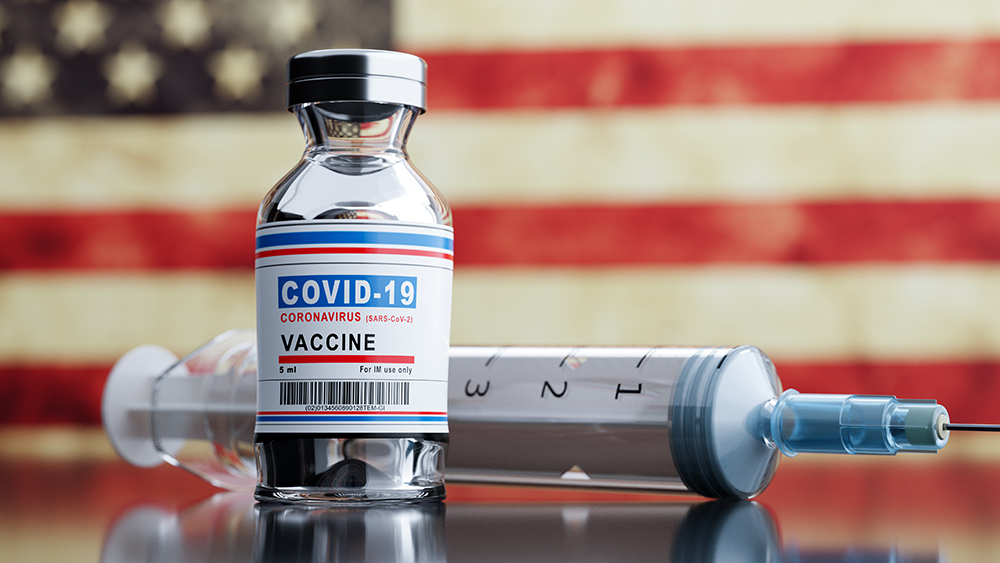Is your baby ‘nonbinary’? Social workers in Pennsylvania are now required to say
02/17/2023 / By News Editors

Pennsylvania social workers must now determine if newborn children identify as “nonbinary,” according to government forms reviewed by the Washington Free Beacon.
(Article by Aaron Sibarium republished from FreeBeacon.com)
The state’s Office of Child Development and Early Learning, which funds health and social programs for young children, requires providers to report demographic information on their cases—including, since 2022, the gender identity of infants. Data collection forms for the agency now ask for newborns’ “gender” rather than their sex and allow providers to select male, female, or “Gender Non-Binary.”
Providers must fill out these forms to receive funding from the office. The requirements apply to a long list of home-visiting programs for children, including some that are exclusively for infants.
“I have to ask clients, ‘Is your 10-day-old male, female, or nonbinary?'” said one Pennsylvania social worker, who works at one of the home-visiting programs funded by the agency. Those programs offer an array of services, from nursing and therapy to child neglect interventions, and serve children of all ages, not just newborns.
In response to a detailed inquiry from the Free Beacon, Pennsylvania’s Department of Human Services, which houses the Office of Child Development, downplayed the requirements.
“This is a field for data collection,” Ali Fogarty, the department’s communications director, wrote in an email. “There is no directive or expectation that parents be verbally or explicitly asked if their children are nonbinary.”
The questions, which were updated in August according to the forms, come amid mounting concerns that the rise in childhood gender dysphoria has been driven by social forces—including the push to teach young people about gender identity and the practice of “affirming” children who identify as transgender. That practice is “not a neutral act,” a review by England’s National Health Service concluded last year, but an “active intervention” that can lock in trans identity, promoting the distress it’s meant to alleviate.
A growing body of research supports that concern. There have been about 12 studies on children with gender dysphoria, said Leor Sapir, a fellow at the Manhattan Institute, and 11 of them found that the condition usually resolves itself by puberty.
The one exception was a 2022 study that only enrolled children who had “socially transitioned,” in part by changing their names and pronouns. In that study—where all the participants had their gender identity “affirmed”—94 percent of kids still identified as transgender by puberty, with another 3.5 percent identifying as nonbinary.
“The simplest explanation is that if you socially transition kids, most won’t come to terms with their body,” Sapir said. That’s one reason why many European countries now embrace a policy of “watchful waiting,” in which caregivers don’t affirm a child’s gender dysphoria until it has persisted for some time.
Forms like Pennsylvania’s encourage the opposite approach, Sapir said. If social workers suggest to parents that young children can be nonbinary—or if they suggest that to children themselves—it could promote the culture of knee-jerk affirmation that’s been linked to gender dysphoria.
“These questions plant the seed in parents,” the Pennsylvania social worker said. Kids will be more likely to identify as nonbinary, she added, if the label is “legitimized” for them at a young age.
The Office of Child Development has gone all in on that project of legitimization. Its data collection guide lists several “resources” that home visitors can use to familiarize themselves with gender identity—including the now-infamous “gender unicorn” diagram, which describes “agender,” “bigender,” and “two-spirit” as examples of “the many genders.”
The list also includes a guide to “being an ally” to “nonbinary young people,” as well as the website pronouns.org, which warns against making “assumptions about the gender of another person” based on the person’s “appearance or name.”
“It can be offensive or harassing to guess at someone’s pronouns,” a page on the website says. “These assumptions aren’t always correct,” and the act of making them “sends a potentially harmful message—that people have to look a certain way to demonstrate the gender that they are or are not.”
Read more at: FreeBeacon.com
Submit a correction >>
Tagged Under:
absurd, big government, culture wars, data collection, gay mafia, gender, gender confused, gender issues, identity politics, insanity, left cult, nonbinary, Pennsylvania, progress, propaganda, social justice, social workers, transgender, Tyranny
This article may contain statements that reflect the opinion of the author




















